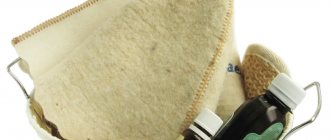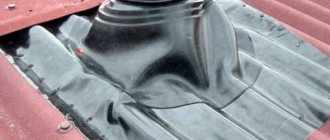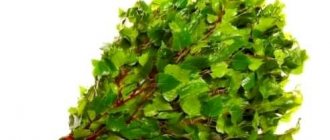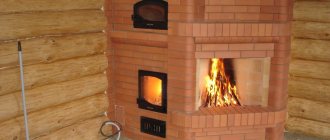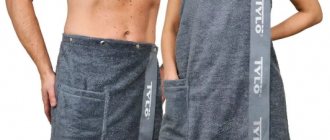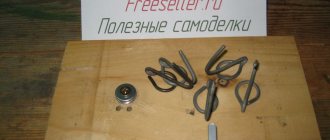Basic felting hat pattern for beginners
The pattern is not difficult. Even beginners can handle this, but it will be much better if you watch a special training video before doing so.
The first thing you need to do when cutting a hat for felting is to measure the circumference of your head.
Let's look at how to make a template step by step:
- First you need to make a calculation. For this we need the size of the head. We measure the circumference of the head and the length from the crown to the neck. We divide the resulting values in half and allocate a percentage for the shrinkage of the material.
- We determine the intersection point and withdraw the resulting amount from it. We get 4 points (half of the whole).
- We connect these points with a dotted line, maintaining a bell shape.
- Add the shrinkage percentage. 30% is enough. The percentage is calculated from the original data.
- We connect the resulting pattern with lines. When determining the percentage, pay attention to the type of wool. Its thickness directly affects the shrinkage of the material. The denser the material, the less it will settle.
This pattern is a help for beginners.
Felted hat: master classes on creating caps and hats with video
19.01.2017 19:53
I leave it to dry.
For those who really love the bathhouse and going to it, this master class on felting a wool cap will come in handy. Wet felting is much easier and faster than dry felting. In any case, no matter what kind of felting, this process is very interesting and exciting. Having tried to felt something once, you will get a lot of pleasant impressions and skills. Today we will do this miracle:
- Plain paper to draw the pattern on.
- Semenovskaya combed ribbon for needlework in the following colors (semi-fine wool of white and scarlet; thin swamp, pistachio and linden wool, as well as emerald acrylic, we will use as decorative fibers).
- Polyethylene film for pattern.
- Nylon fabric.
- Film with pimples.
- Soap solution (you can make it yourself in a ratio of 1 to 10 dishwashing detergent with water).
- Manual surface grinder.
- A felting stick with a round cross-section.
- Bamboo mat.
- Polyethylene and rubber gloves.
- Needles for felting.
- A thick sponge or a special brush-cushion for felting.
Since you are already going to the bathhouse, it’s time to start making a knitted washcloth using a hook - natural, of the right size and stiffness, it will delight you more than once in the bathhouse!
So, first we need to make a pattern on paper. It will be shaped like a bell. We draw a pattern that corresponds to head size 56. The width will be 44 cm, and the height will be 28 cm, and we will add 6 cm to make a semicircle. We make two patterns, one on paper and the second on film, and we get the same result as in the photo.
Pattern
We place a paper bath cap pattern under the film and lay out the wool. We pull out the scarlet wool and lay out the first layer with thin strands, tips up. It is better to lay out the scarlet wool from the top of the head, this will be the front side. So with thin strands of scarlet wool we get about five rows.
Lay out the scarlet wool
Cover with a nylon cloth, moisten with soapy water and press lightly. In order not to wet the wool too much, it is better to take a special bottle with a dispenser or sprayer.
You should rub from the center to the sides so that the wool settles evenly.
Then we make circular movements, periodically lifting the fabric, doing this until the fibers stop stretching behind the fabric.
Pressing down the wool
Place the film pattern on top of the wool blank and press it firmly. We wrap the ends that remain on the top and sides with film.
Do you know what else you must do for a good trip to the bathhouse? Of course, a fragrant handmade scrubbing soap that will gently cleanse your skin and have exactly the properties you want!
Place the pattern on the workpiece
Now we lay out the second front side also in longitudinal strands, starting from the bottom and up. Cover again with nylon cloth, moisten with a spray bottle of water, lightly press down and carefully turn over to the other side. We bend the protruding ends.
Curling the protruding ends
Now we lay out the transverse layer so that thin strands protrude outward on the sides, and from below we make sure that the strands lie evenly with the contour line. We try to make the thickness of the strands the same everywhere, in all layers, both those that are longitudinal and those that are transverse.
Cover the top with nylon cloth, spray it, rub it in, then turn it over to the other side and bend the edges. Now, in the same way and in the same sequence, we lay out the transverse layer on the back side of our cap. In total, we end up with two layers of longitudinal wool on both sides.
You will find practical advice on how to make soap from old soap at home in our separate article at the link.
Lay out the cross layer
In total, we have four layers of scarlet wool laid out, they should be very close to each other.
You need to rub the product in thoroughly; you can use a surface grinder, if you have one. It saves a lot of time and effort.
It is necessary to use the machine only through nylon fabric for 5 minutes on each side, about 20 minutes in total. The sides cannot be machined.
Using a sander
The cap should not be excessively wet, therefore, when laying out the layer, it is necessary to monitor the humidity very carefully and distribute the soapy water evenly. If suddenly it turns out that you have overdone it with water, then it is recommended to thoroughly blot the product with a towel so that it absorbs excess moisture.
Before processing with a machine, it is recommended to trim the lower edges of the cap with scissors. We wrap our cap on a stick and place it on a bamboo mat. Roll for about 5 minutes. After 5 minutes, unroll the roll and change the position by 90 degrees so that the wool is evenly distributed.
Then we turn the cap over to the reverse side and roll it again for about 20 minutes, as in the photo
Roll out the cap
During the felting process, we monitor and correct the inner contour so that it does not break.
Don't forget to correct the inner contour
Roll a circle for about 20 minutes
We change the planes of the cap, we get the side seam in the middle. Don't be alarmed if you get wrinkles on the top of your head. Roll the circle again for 20 minutes, gradually smooth out the outline and change the position of the cap. We do this so that all the layers intertwine and fall together.
Smooth out the outline and change the position of the cap
Now we roll with plastic gloves in our hands, gradually adding soapy water. You need to wrinkle the cap in all directions.
Gradually add soapy water
To ensure that your feet are always surrounded by care, study the instructions for sewing socks on two knitting needles without a seam and start knitting experiments right now!
During the felting process, it is recommended to lay out the hat on the table and smooth it thoroughly both inside and outside. Gradually, the fur begins to tangle and the cap decreases in size. The surface of the cap also changes during felting. It is necessary to try on the hat often. The lowest layer must be thoroughly rolled on film so that it is level.
Once you have reached the desired size, place the cap in hot water, knead slightly, and then straighten it. Then we immediately make a contrast and lower it into cold water, also knead and straighten it. We do this two more times. We do this so that in the steam room the cap does not lose its size.
At the end of these procedures, rinse the hat thoroughly in warm water to remove any soapy mass and blot it with a towel.
Rinse the bath cap in warm water
When the cap is still wet, we can easily pull it onto the workpiece. Its shape should be like a bell. You can dry the cap in a regular 3-liter jar, if suddenly there is no blank. The main thing is to give the product the desired shape.
We give the product the desired shape
Now we will felt the decor in the shape of a strawberry. We cut out a circle with a diameter of about 9 cm, place the pattern under the film and lay out the wool. We tear off short bundles and lay out identical bundles of white wool from the edge to the center.
Let's start felting the decor
Laying out the wool
Transverse and longitudinal layer
Finished flower layout
Now we take a thick strand of marsh color, its length is about 50 cm. This will be a stem. We twist the strand thoroughly to understand how thick the stem will be.
Blank for stem
We divide one edge of the stem into equal three parts and fluff them, we will lay the leaves on them. Then we place small tufts of green wool on the stem. Without wetting, roll the stem on the film.
Fluff parts of the stem under the leaves
Rolling the stem on film
We carefully roll all the parts of the stem separately to a certain state.
Roll all the parts of the stem
Ready strawberry stem for a bath cap
Tip: To create an atmosphere of comfort and coziness in your kitchen, knit multi-colored oven mitts with different patterns and decorate a wall or corner with them.
First we felt all the parts thoroughly separately, and then we roll them together with wool.
We roll the stem to the leaves
We roll all the leaves together
Finished stem with leaves
We take a flower blank, cut the petals with scissors and round them. We felt the stem, leaves and flower and crumpled them in our hands, and then straightened them out again. Like the cap itself, we lower the flower, leaves and stem, first into hot and then into cold water. We do this procedure three times, rinse in warm water and blot with a towel, dry.
There is very little left to decorate our hat with a strawberry. Using chalk we make marks where we will have yellow dots. We put our hat on a thick sponge or a special pad and with a felting needle we drive in yellow tufts of wool, making them small, round and the same size.
Using a felting needle we drive in yellow tufts of wool
We make a yellow center from yellow wool for the flower. To do this, twist a small strand of yellow wool and felt a circle. We sew the flower onto the leaf, determine the center at the top of the cap and sew the stem with sepals to the cap with a hidden seam, bend the stem into a loop so that the cap can be hung, and secure it with threads. We see how to finish everything in the photographs.
Making a yellow center from yellow wool for a flower
Result
If you like to make things with your own hands, decorate your home and delight your loved ones with pleasant handmade trinkets, try decorating wooden products using the decoupage technique - this completely renews old things, makes them unique and stylish!
Step-by-step felting of a bathhouse cap: master class from professionals
For bath lovers, an original cap will be an excellent attribute in a hot sauna. Wet felting is great for wardrobe items. Consider a master class on making a bath cap.
To work you need:
- Material for pattern;
- Wool;
- Polyethylene;
- Nylon fabric;
- Warm soapy liquid;
- Sanding machine, if available;
- Gloves for work.
We make a pattern on paper. The hat will be in the shape of a bell. We focus on size 56. Based on this, the width is 44 cm and the height is 28 plus 6 cm to create a semicircle. Let's make another pattern on polyethylene.
We put the polyethylene under the paper and begin to lay out the wool. Let's choose the main shade and start working from the top of the head. Thin strands will make approximately 6 rows.
The next step is to wet press the pattern. Place a nylon cloth on top of the felt ball and moisten it with a soap solution. It will be convenient to use a spray bottle.
We begin to wipe the future hat, moving from the central part to the sides. When the wool lies evenly, you can begin to make circular movements, lifting the nylon fabric. These manipulations must be performed until the felt stops stretching.
We apply a film pattern to the product. It is necessary to press down the template well. Carefully tuck any protruding fibers behind the film.
Next you need to place the second ball. Now starting from the bottom and moving to the top. Next you need to carry out the same manipulations as with the first layer. Cover with a nylon cloth, moisten and smooth out a little. Then the hat blank must be turned over. Carefully tuck any protruding fibers behind the film.
Now you need to make a cross layer of wool. On the sides the villi can boldly protrude, while at the top and parallel to it a straight line should form.
The bath cap can be of any design, the main thing is to follow the instructions, then the result will not be long in coming
The thickness of the wool layer should be the same in both balls.
Then we again cover the cross layer with a cloth, spray it with soapy water, and rub it. Turn over and remove any protruding fibers.
On the other side the process is similar. Then repeat the cross layer on both sides. Total of 4 layers in total on each side.
The wool needs to be pressed. To do this, you can use a special machine or work manually. There is no need to process the edges.
Monitor the moisture content of the product. In case of high humidity, remove excess water with a towel.
Next you need to roll the hat onto a stick and roll it on a bamboo mat. The procedure will take 5 minutes, after which the product is straightened and the felting side is changed. You need to allocate 20 minutes for this. During surgery, smooth out any creases. After this, the cap must be turned out and the procedure repeated. The product resembles a cap.
It’s time to add a soap solution to well-felted wool. It is better to work with gloves. You need to crush the product thoroughly.
While felting, straighten the craft on both sides.
When the product begins to shrink, you need to put the hat in hot water and wrinkle it a little. Next, lower the product into cold water. Repeat this contrast again. This is an important measure so that the hat gets used to changes in temperature in the bathhouse. When finished, rinse the product in warm water and dry with a towel.
The still wet hat must be put on the workpiece and given the desired shape.
If desired, you can create a woolen decor. You can also make the lining on silk.
Hat “Viola” using wet felting technique
Make your own floral print hat using the wet felting technique.
The work will seem easy and understandable to you thanks to the step-by-step descriptions of all stages given by the author of the master class.
For work you will need the following materials and tools: - wool for felting 18 microns of gray color, volume 100 g; — wool for felting 18 microns blue (just a little); — white viscose fibers; - silk fibers of blue and green colors; - pieces of natural blue silk; — a backing for the laminate (for transferring the pattern); — protective film (air bubble); - mosquito net; - soap or soap solution; - needle and thread; - scissors.
To construct it yourself, draw a center line (50 cm), and on both sides put a horizontal segment of 19 cm. The result is a rectangle measuring 50 * 38 cm.
From the bottom of the figure, set aside a segment of 40 cm upward - the radius of the cap. At the top of the head, from the center line to the left and right, set aside 9 cm segments, drawing a perpendicular from these points until it intersects with the radius of the cap.
From the formed intersection with a radius of 10 cm, round the corners. Step 2 Transfer the pattern to the backing sheet and cut along the contour.
Step 9 Next, cut the silk into strips. For small petals you need 12 strips measuring 8*7 cm, and for large petals you need 3 strips measuring 10*9 cm.
Please note that the silk must be cut at an angle of 45 degrees to ensure that the petals are elastic.
Step 13 Next, bend the rectangle in half, with the wool facing inward. Gather the lower edge of the petal onto a thread, moving 2-3 mm from the edge of the silk, and pull it off, forming a petal.
The author emphasizes that the threads should be matched to the tone of the silk, because... We will not remove them, and the cotton from the threads falls well.
Step 16 Now start assembling the flowers. So, for one flower you need 4 small and 1 large petal.
They should be positioned as in the photo:
Step 27 Having completed the folding, remove the cap from the template.
Step 28 After the hat is almost ready, form the top of the hat by first placing it on a blank, carefully smoothing out all the creases.
An interesting idea - felting a hat with ears
The felting technique can be used when creating a hat with earflaps. You can also create children's versions of the product with cat ears.
Let's consider an interesting option for hats with ears. For work we will need:
- Wool is the main material;
- Material for pattern;
- Soapy water;
- Polyethylene;
- Sanding machine (if available).
The system for felting a hat with ears is no different from a regular hat: we apply several layers of wool, thoroughly wetting and compacting the pattern on both sides
The usual pattern involves a circle in the shape of the head. For hats with ears, you need to cut out an ellipse. We take head circumference data, but stretch the circle. The correctness of the calculation can be easily checked using a thread. Use it to measure the circumference of your head and compare it with the drawn ellipse.
The most important part of the pattern is drawing the ears. We draw them in a circle, taking into account that the ear deviates from the center if you look at the head profile drawing.
At the end of intensive felting, we give the product a contrasting bath, after which we rinse the hat and allow it to dry on the workpiece. Malachai is ready to use.
Bath cap and its features
The bath cap does not let high temperatures inside due to the thermal insulation effect. Wool is a natural thermal insulator. This is why hats made of wool are often worn in hot countries to prevent heat stroke. Sometimes in the steam room you can find bath lovers wearing ordinary knitted hats, intended for everyday street wear. They perform the function of protecting the head, however, they cannot compare in terms of convenience with a real bathing cap.
A high-quality bath cap not only protects the head from heat, but is also a beautiful, aesthetic accessory that emphasizes the individuality of the owner. In addition, the hat should be easy to wash and comfortable.
Bath hats are most often made of felt or felt. You can make a bath hat using the felting method, which involves creating the fabric itself - felt - from pieces of wool, but you can also take ready-made material and sew a hat from it. We talked in detail about felting a bath cap in one of the previous articles, and today we will figure out how to make a bath hat from a ready-made piece of felt or felt.
Felting a men's hat for everyday wear
Wool hats retain heat well and regulate humidity. For a fisherman husband, such a gift will be a real salvation on winter fishing.
In the appropriate store you need to buy wool of the desired color and density.
For felting a men's hat, it is better to choose practical dark or gray wool options
The set of tools remains the same. We will need:
- Wool;
- Polyethylene;
- Soapy liquid;
- Felting machine (if available);
- Pattern paper;
- Nylon fabric.
The sequence of work and technique is maintained. We measure the circumference of the head and make a pattern. Next, we place the felt in several balls and knead it thoroughly, spraying it with soapy water.
After repeating the manipulations on both sides, we begin felting. The process will take about an hour. After this, we wash the product and leave it to dry on the workpiece.
In Georgia, woolen hats are considered a traditional headdress for men. This wardrobe item can be found in every Georgian.
How to felt a wool hat - master class
To ensure that you get a good, high-quality hat, perform all steps carefully and follow the sequence of all stages. For convenience, here is a felting diagram:
- Prepare your work area by laying out the film and template.
- Start laying the wool strands on the bottom layer in rows. In this case, each row should overlap the previous one, covering it by about half.
- So you should lay out 3-4 layers, perpendicular to each other. Make sure the material is distributed evenly.
- Leave overhangs on each layer that extend beyond the edges of the template. This will be needed for further bending of the product.
- Treat the workpiece with a soap solution, spraying it evenly from a spray bottle.
- After this, cover the wool with film on top and smooth the material.
- Turn the workpiece over and carefully fold the edges of the wool around the entire perimeter.
- Repeat laying the wool on the other side.
- Treat the reverse side with soapy water and fold the edges of the product.
- Once both sides are soaked, start working with the rolling pin, rolling out the wool evenly.
- At the final stage, place the hat on a towel and continue felting until the desired size.
- Let the product dry.
Everything is ready, after the product has dried, it can be worn.
If desired, you can add fibers of multi-colored wool to create a pattern. The felting mechanism will not change; the main thing is to monitor the uniform distribution of fibers at all stages.
Felting a hat at home (photo of the process)
Similar articles
- Felting felt boots: for a doll, video master class from dry wool, at home, souvenir template, pattern for wet felting, for children for beginners
Felt boots can be not only shoes, but also an original decorative element. Today the situation has changed radically and anyone can work with wool... - Hydrangea from foamiran: how to make a master class, photos of flower templates, video, how you can replace the pattern and molds, with your own hands
Hydrangea from foamiran is one of the most popular flowers among florists. If a flower from foamiran falls, it will remain intact, will not wrinkle or break off,… - Do-it-yourself patchwork blanket: patchwork quilts, photos, master class for beginners, patterns from squares, how to sew a double-sided blanket, video instructions
Each patchwork product is unique: it is simply impossible to repeat it exactly. If you look at numerous photos or videos depicting patchwork…
Felting wool hats
Nowadays, things made with your own hands are becoming a real rarity and are practically going out of fashion. It is much easier for people to go to a store and buy everything they need for personal use. But despite the rapid development of production rates, the traditions of manual labor and independent production of things are preserved in small volumes.
In this article we will discuss methods for felting hats made from real wool. If you have free time and a desire to try to prove yourself in this area, you can do this by following the instructions and step-by-step plan.
Manufacturing the product will not require you to have any special skills; anyone can handle this task.
Felted bath hat “Horse” – HandMade39.ru
Made from 100% natural wool using the felting technique (wet felting) with a pattern.
Size 56-58.
A funny gift for your friends for a bath and sauna.
Master Class:
1 - prepare a template - a pattern for our hat - and lay out the wool in 4 layers (2 layers of transverse and 2 layers of longitudinal wool), the wool is laid out on both sides of the hat.
2 - wet everything well (water + soap or dishwashing liquid). We bend the edges of the wool to the reverse side. 3 - Cover our hat with bubble wrap and press it down with a sander. If there is none, press it down with your hands. 4 - We work with our hands, tighten the hat, do not forget to smooth the sides so that there are no scars on the product. 5 - Roll the hat in all directions. 6 - When we see that the cap template has become small, we cut the cap from the bottom and take it out. 7 - Add more weight to the cap, crumple it, smooth out all the sides. 8 - While folding, we gradually shape the hat. 9 - The hat was felted. This is how much smaller it has become, we go to the bathroom and give the hat a “thermal shock” (alternating hot water with cold). 10 - After the “thermal shock” the cap became dense and holds the shape we give it well. Ideally, this should be done on a hat blank; I don’t have one, so we put it on a jar and leave it to dry. 11 — While the hat is drying, using the dry felting technique we make ears for our horse. We take light brown wool and use a No. 38 needle to shape the ears. We do not felt the bottom of the ears. 12 - The hat is dry, let's start the fun part: drawing. We lay out the background of the horse with light brown wool and nail it with a No. 38 needle. 13 – We flatten the ears and form the outline of the head. 14 - lay out the outline of the eye with blue wool. 15 - Draw the eye, use white wool for the pupil of the eye, and black wool for the outline of the eye. 16 - Yellow fur - the shadow of the eye. We press everything well with needles. 17 - Next are the nostrils and lip. 18 - We lay out white wool on the forehead, dark brown cheeks. 19 – Mane – blue and yellow wool. We nail everything down with needles. 20 — The final stage: we look carefully. Where necessary, we add shadows, check whether the ears are securely laid down and pierce our pattern with thin No. 40 needles. We steam the hat and wear it with pleasure. The author of the master class is Tatyana Stremnitskaya.
handmade39.ru



